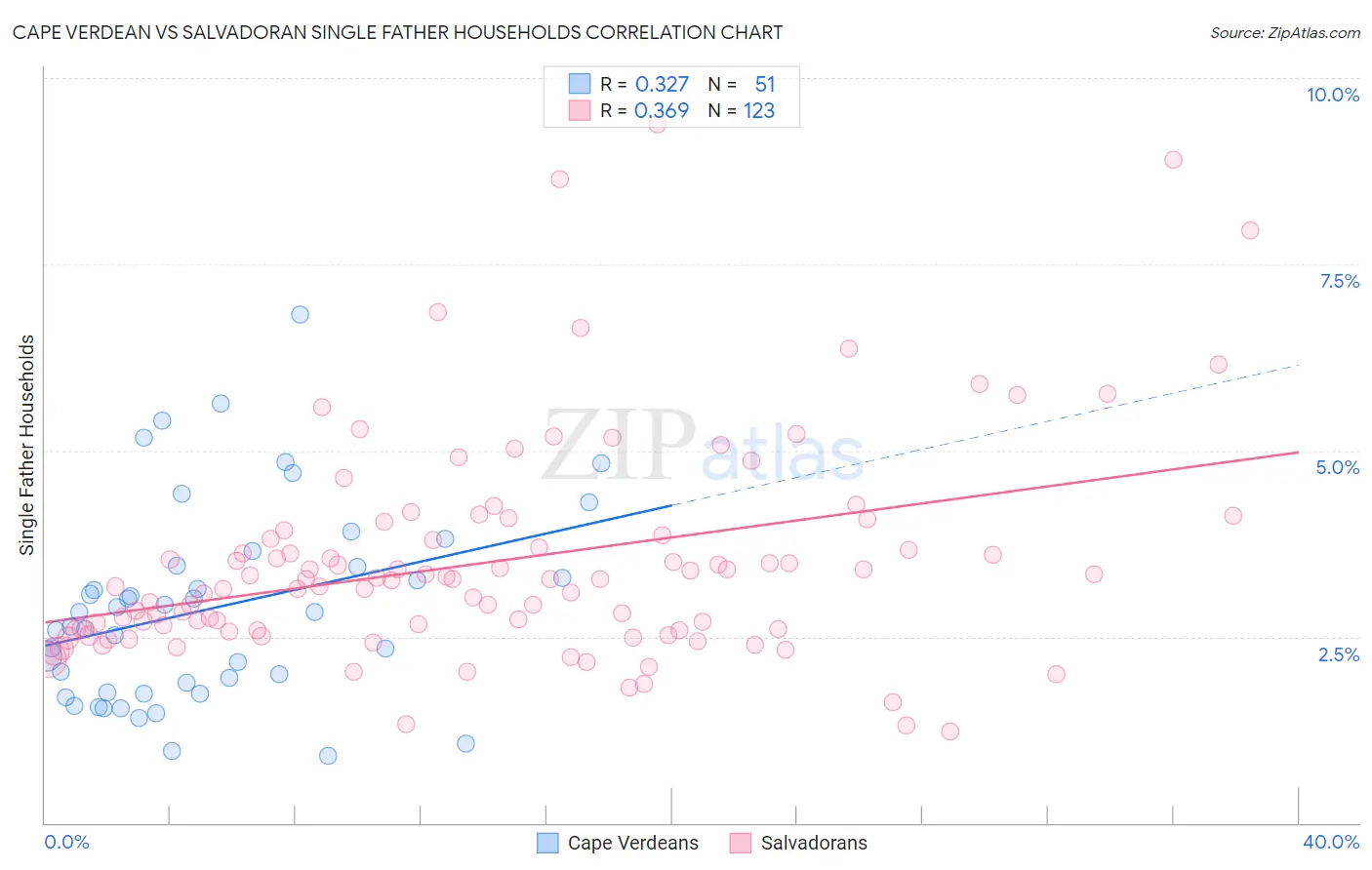Cape Verdean vs Salvadoran Single Father Households
COMPARE
Cape Verdean
Salvadoran
Single Father Households
Single Father Households Comparison
Cape Verdeans
Salvadorans
2.9%
SINGLE FATHER HOUSEHOLDS
0.0/ 100
METRIC RATING
318th/ 347
METRIC RANK
2.9%
SINGLE FATHER HOUSEHOLDS
0.0/ 100
METRIC RATING
314th/ 347
METRIC RANK
Cape Verdean vs Salvadoran Single Father Households Correlation Chart
The statistical analysis conducted on geographies consisting of 107,168,631 people shows a mild positive correlation between the proportion of Cape Verdeans and percentage of single father households in the United States with a correlation coefficient (R) of 0.327 and weighted average of 2.9%. Similarly, the statistical analysis conducted on geographies consisting of 395,913,017 people shows a mild positive correlation between the proportion of Salvadorans and percentage of single father households in the United States with a correlation coefficient (R) of 0.369 and weighted average of 2.9%, a difference of 1.3%.

Single Father Households Correlation Summary
| Measurement | Cape Verdean | Salvadoran |
| Minimum | 0.90% | 1.2% |
| Maximum | 6.8% | 9.4% |
| Range | 5.9% | 8.1% |
| Mean | 2.9% | 3.5% |
| Median | 2.8% | 3.3% |
| Interquartile 25% (IQ1) | 1.8% | 2.6% |
| Interquartile 75% (IQ3) | 3.5% | 3.9% |
| Interquartile Range (IQR) | 1.7% | 1.3% |
| Standard Deviation (Sample) | 1.3% | 1.5% |
| Standard Deviation (Population) | 1.3% | 1.5% |
Demographics Similar to Cape Verdeans and Salvadorans by Single Father Households
In terms of single father households, the demographic groups most similar to Cape Verdeans are Immigrants from El Salvador (2.9%, a difference of 0.010%), Ute (3.0%, a difference of 0.53%), Guatemalan (3.0%, a difference of 0.61%), Cheyenne (2.9%, a difference of 0.87%), and Houma (2.9%, a difference of 0.87%). Similarly, the demographic groups most similar to Salvadorans are Arapaho (2.9%, a difference of 0.25%), Cheyenne (2.9%, a difference of 0.39%), Houma (2.9%, a difference of 0.39%), Tsimshian (2.9%, a difference of 0.67%), and Spanish American Indian (2.9%, a difference of 1.2%).
| Demographics | Rating | Rank | Single Father Households |
| Immigrants | Azores | 0.0 /100 | #306 | Tragic 2.8% |
| Hopi | 0.0 /100 | #307 | Tragic 2.8% |
| Apache | 0.0 /100 | #308 | Tragic 2.8% |
| Central Americans | 0.0 /100 | #309 | Tragic 2.9% |
| Immigrants | Laos | 0.0 /100 | #310 | Tragic 2.9% |
| Spanish American Indians | 0.0 /100 | #311 | Tragic 2.9% |
| Tsimshian | 0.0 /100 | #312 | Tragic 2.9% |
| Arapaho | 0.0 /100 | #313 | Tragic 2.9% |
| Salvadorans | 0.0 /100 | #314 | Tragic 2.9% |
| Cheyenne | 0.0 /100 | #315 | Tragic 2.9% |
| Houma | 0.0 /100 | #316 | Tragic 2.9% |
| Immigrants | El Salvador | 0.0 /100 | #317 | Tragic 2.9% |
| Cape Verdeans | 0.0 /100 | #318 | Tragic 2.9% |
| Ute | 0.0 /100 | #319 | Tragic 3.0% |
| Guatemalans | 0.0 /100 | #320 | Tragic 3.0% |
| Mexicans | 0.0 /100 | #321 | Tragic 3.0% |
| Immigrants | Guatemala | 0.0 /100 | #322 | Tragic 3.0% |
| Immigrants | Central America | 0.0 /100 | #323 | Tragic 3.0% |
| Fijians | 0.0 /100 | #324 | Tragic 3.0% |
| Immigrants | Mexico | 0.0 /100 | #325 | Tragic 3.0% |
| Aleuts | 0.0 /100 | #326 | Tragic 3.0% |